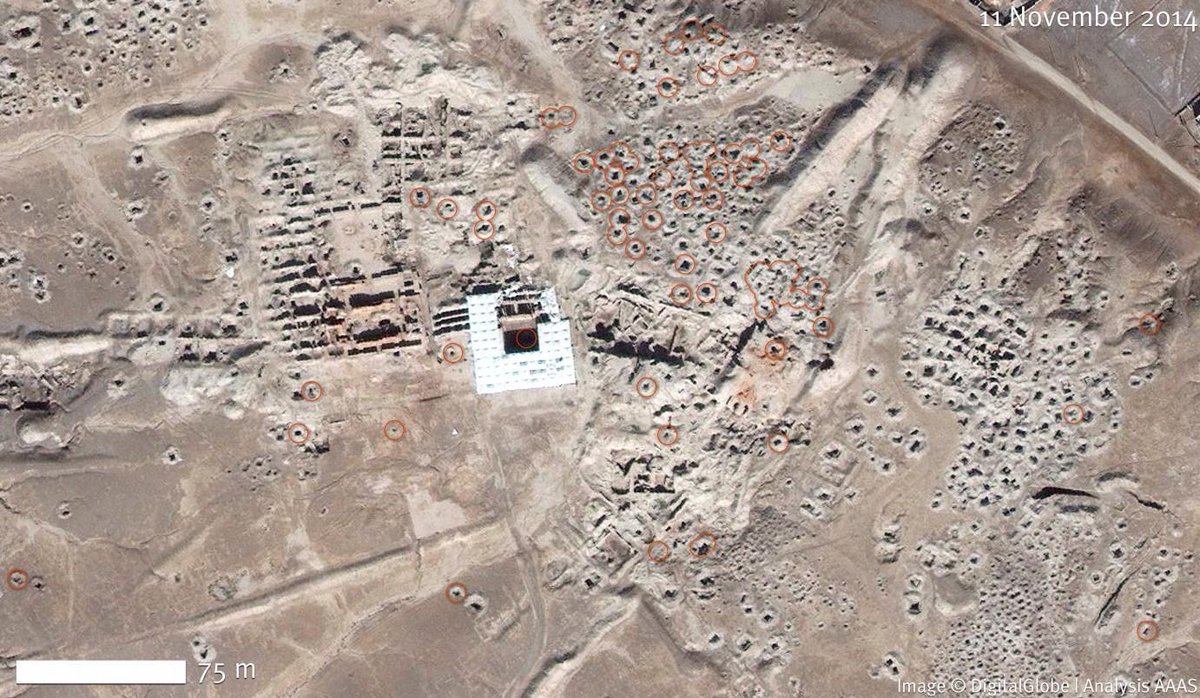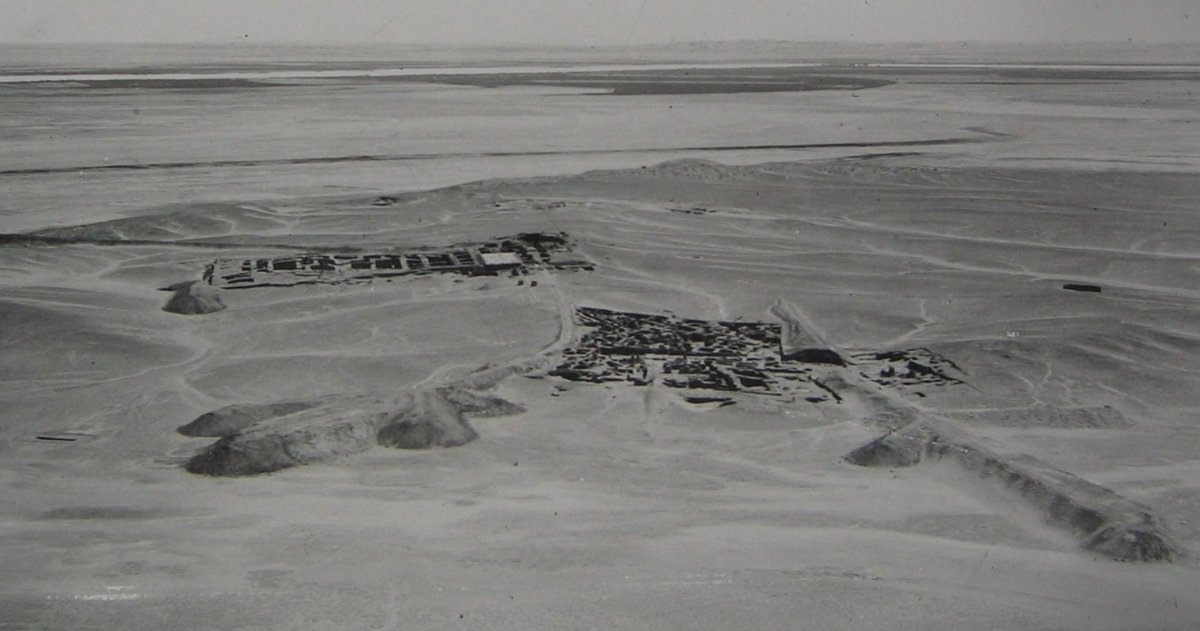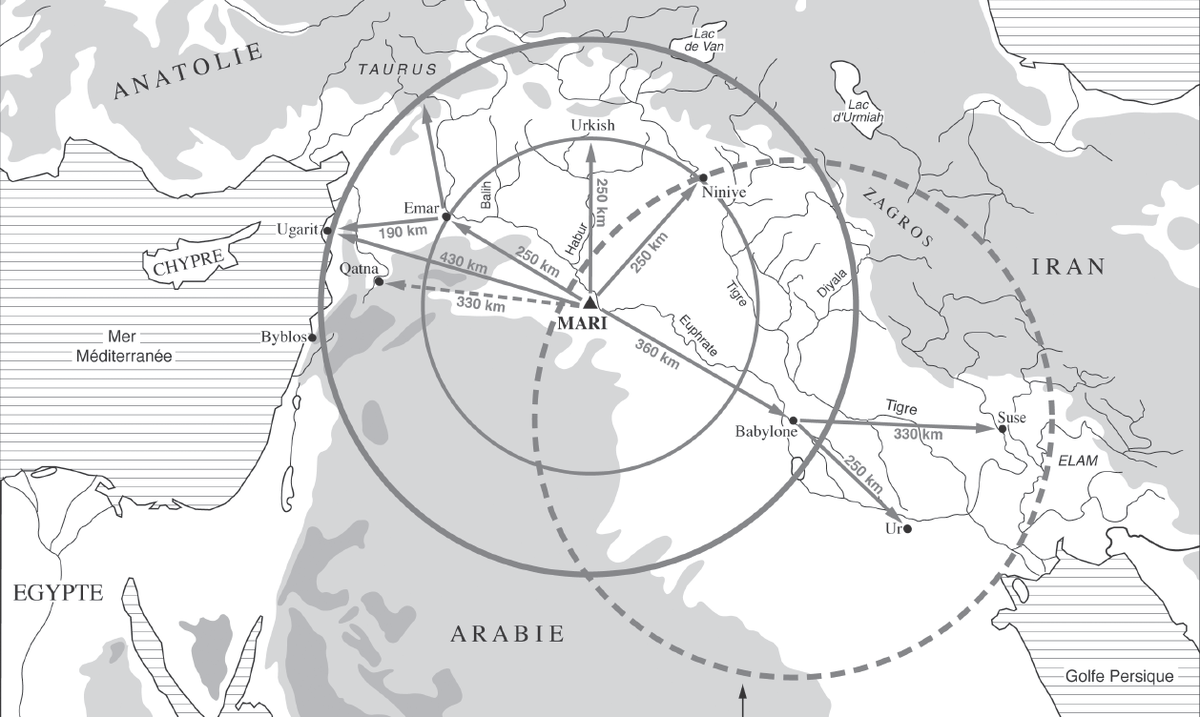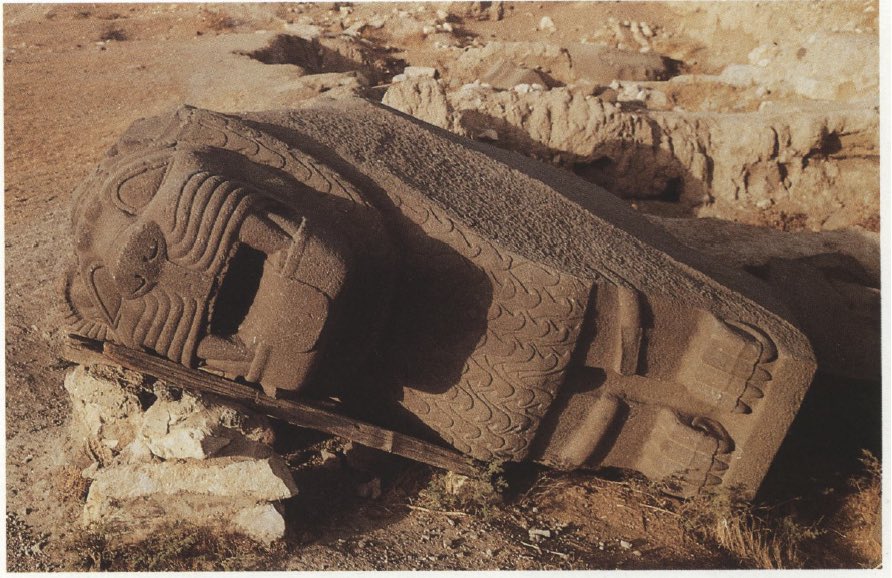
Tell Halaf is an ancient mound situated by the Khabur, a major tributary of the Euphrates in Northern Syria. It's importance comes with its strategic location which connected it once with the ancient cultures of Upper Mesopotamia and those of the Mediterranean.(1) 

Two main periods have so far been detected at the site: The Pottery Neolithic , and the Iron Age. In these threads, I focus on the latter.(2)
But before I delve into the remarkable archaeological, architectural and sculptural finds this site has to offer, I think we must first cover the story of the discovery and early excavations at Tell Halaf, as well as the tragic life of the sculptures after their discovery.(3) 

A short disclosure: Yes, I do get uncomfortable while reading intentional/unintentional racist and orientalist remarks towards workmen and inhabitants native to my region by early 20th c. white archaeologists. But I try hard to scour for the good stuff in their accounts.(4)
Contrary to popular belief, Von Oppenheim was NOT first to know of the sculptures of the tell. It was the Iraqi-Assyrian archaeologist Hormuzd Rassam who first heard about the site in 1882, sent his representative to Tell Halaf, and confirmed the presence of sculptural ruins.(5) 



Max von Oppenheim went into great lengths to document his excavation seasons at Tell Halaf. Reading "Tell Halaf: eine neue Kultur im ältesten Mesopotamien"(eng trans), I got a fantastic account of not only the dig, but also of political, diplomatic, and personal stories.(6) 



Though at times harsh, he did also showcase a sentimental side. E.G. he wrote quite fondly of Elias and Tannus Maalouf, two of his workmen-turned trusted confidants who were cousins from Lebanon. He also mourned them greatly when they both passed away in 1927 and 1930.(7)
In this memoir/excavation report, Max von Oppenheim had prided himself for spending months at an end in Northern Arabia, Syria, Mesopotamia and Egypt. He especially liked to spend time with the Bedouins of the region, and has even written a volumes on Bedouin ethnography.(8) 

In 1899 he traveled to the "Land of the Two Rivers" on a German diplomatic mission in order to survey and propose where it would be best to lay out the soon to be extended Baghdad Railways, which would eventually connect Aleppo to Mosul.(9)
Upon his visit of influential Bedouin chief Ibrahim Pasha in the Bedouin settlement of Veranshehir, he was told of remarkable statues that had been discovered on a hill by inhabitants of Ras al 'Ain, a small village by the Khabur river.(10) 

The villagers had come across these statues while digging to bury one of their dead. One of the sculptures, it was reported, had the head of a human and body of an animal. Terrified, the superstitious villagers reburied the statues and interred their dead in another spot.(11) 

Von Oppenheim wasted no time to take off to Ras al 'Ain. The journey took 5 days and was muddled with Bedouin 'ghazwas' (robberies). But he always emerged unscathed along with his caravan after successfully negotiating with the bandits.(12) 

Once he had arrived to Ras al 'Ain, he went to the house of the 'mokhtar' (mayor) right away and asked for the location of the sculptures. All the Bedouins present at the mokhtar's house denied ever having heard of such a thing.(13) 

Von Oppenheim insisted he HAD to know where the statues were discovered. Things escalated from chill to pandemonium pretty quickly after von Oppenheim's next comment:(14)
He told the mokhtar and the Bedouins sitting with him that they were all liars, and that they were violating their own rules of hospitality. He also "hurled a curse" at his hosts, and said that God will also frown upon them for lying straight to his face.(15)
This prompted the following dramatic scene: a sea of men, daggers drawn, pointed straight at von Oppenheim's face. But Max payed no heed. Instead, he proceeded to tell the Bedouins that this move will "cap their false oath with the murder of their guest in their own house".(16)
The mokhtar still insisted on not disclosing the location of the sculptures. He cited the horrible season of drought, locust swarms and cholera the tribe had suffered ever since they had unearthed those demons.(17)
But soon enough, von Oppenheim's exceptional negotiating skills allowed him to coerce the begrudging leader into accepting to reveal this well kept secret.(18)
More drama further ensued of course, including many a Bedouin claiming ownership of the mound and demanding large sums of money for it's inspection. All were ways, according to von Oppenheim, for curtailing his archaeological mission.
And now enough about that, let's move on to the excavations: Tell Halaf (Part 2): The Early Excavations (20) 

Here's part 2 for easier access:
https://twitter.com/ranaofsidon/status/1366825682806968322?s=20
• • •
Missing some Tweet in this thread? You can try to
force a refresh













